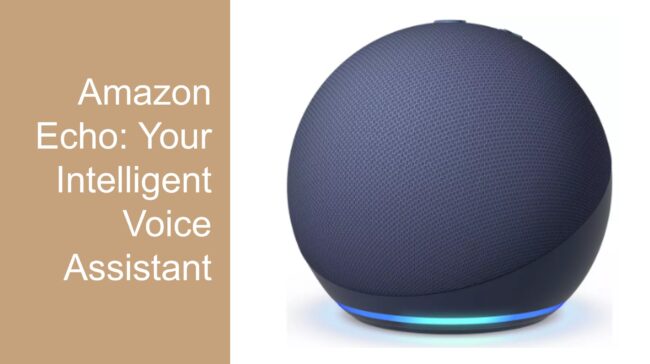The concept of a smart home is becoming increasingly popular these days, thanks to the advances in technology.
With a smart home, you can control everything from your lights to your appliances using your voice or mobile device, and it can all be automated to make your life easier.
In this article, we’ll provide an ultimate guide to setting up a smart home, including everything you need to know to get started.
Step 1: Determine Your Needs
The first step in setting up a smart home is to determine your needs. What are the things that you want to be able to control remotely or automate?
For instance, do you want to be able to turn on your lights remotely, or do you want to be able to lock and unlock your doors using your smartphone?
Here are some of the things you might want to consider:
- Lighting: Do you want to be able to turn your lights on and off remotely? Do you want to be able to dim your lights or change their colour?
- Heating and cooling: Do you want to be able to adjust the temperature in your home remotely?
- Security: Do you want to be able to monitor your home when you’re away? Do you want to be able to lock and unlock your doors remotely?
- Appliances: Do you want to be able to turn on your coffee maker or other appliances remotely?
Make a list of the things that you want to be able to control, and prioritize them in order of importance.
Step 2: Choose Your Smart Home Hub
The next step is to choose your smart home hub. The hub is the device that will connect all your smart home devices and allow you to control them from one central location.
There are several different types of smart home hubs, including:
- Amazon Echo: The Amazon Echo is a smart speaker that can be used to control a variety of smart home devices.
- Google Home: Google Home is a smart speaker that can be used to control a variety of smart home devices.
- Apple HomeKit: Apple HomeKit is a platform that can be used to control a variety of smart home devices, including those from other manufacturers.
There are also several other third-party hubs available that can be used to connect your smart home devices.
When choosing your smart home hub, consider the following:
- Compatibility: Make sure that the hub is compatible with the devices that you want to control.
- Voice assistant: If you want to be able to use voice commands to control your smart home devices, make sure that the hub has a built-in voice assistant.
- Ease of use: Look for a hub that is easy to set up and use.
Step 3: Choose Your Smart Home Devices
Once you have chosen your smart home hub, it’s time to choose your smart home devices. There are a wide variety of smart home devices available, including:
- Smart lights: These lights can be controlled remotely or with voice commands, and can also be set to turn on and off automatically.
- Smart thermostats: These thermostats can be controlled remotely and can also learn your preferences and adjust the temperature accordingly.
- Smart locks: These locks can be locked and unlocked remotely, and can also be set to lock and unlock automatically based on your location.
- Smart cameras: These cameras can be used to monitor your home when you’re away, and can also send alerts if they detect motion.
- Smart appliances: These appliances can be controlled remotely, and can also be set to turn on and off automatically.
When choosing your smart home devices, consider the following:
- Compatibility: Make sure that the devices you choose are compatible with your smart home hub.
- Cost: Smart home devices can be expensive, so make sure that you choose devices that fit within your budget.
- Ease of use: Look for devices that are easy to set
Step 4: Set Up Your Smart Home Devices
Once you have chosen your smart home devices, it’s time to set them up. Each device will have its own set-up instructions, but generally, the process will involve the following steps:
- Connect the device to your Wi-Fi network: Most smart home devices will need to be connected to your Wi-Fi network in order to work.
- Install the device’s app: Each device will have its own app that you will need to install on your smartphone or tablet.
- Follow the app’s instructions: The app will guide you through the process of setting up the device. This may involve entering your Wi-Fi password, creating an account, or scanning a QR code.
Once you have set up your devices, you can start controlling them using your smart home hub or the device’s app.
Step 5: Automate Your Smart Home
One of the biggest benefits of a smart home is the ability to automate tasks. This can save you time and make your life easier. Here are some examples of tasks that you can automate:
- Lighting: You can set your lights to turn on and off automatically at certain times of the day or when you enter or leave a room.
- Heating and cooling: You can set your thermostat to adjust the temperature based on your schedule or when you enter or leave the house.
- Security: You can set your smart locks to lock and unlock automatically when you arrive or leave home.
- Appliances: You can set your coffee maker or other appliances to turn on and off automatically.
To automate your smart home, you will need to use the app that comes with your smart home hub. The app will allow you to create routines that will automate tasks based on certain conditions.
Step 6: Protect Your Smart Home
Finally, it’s important to protect your smart home from security threats. Here are some tips to keep in mind:
- Use strong passwords: Make sure that you use strong passwords for all your devices and apps.
- Update firmware regularly: Make sure that you keep your devices’ firmware up to date. This will ensure that they have the latest security patches.
- Be mindful of data collection: Smart home devices can collect a lot of data about your activities. Be mindful of the data that your devices are collecting and take steps to protect your privacy.
- Use a VPN: If you want to access your smart home devices remotely, consider using a VPN to protect your connection.
Conclusion
Setting up a smart home can be a great way to make your life easier and more convenient.
By following the steps outlined in this guide, you can choose the right devices, set them up correctly, and automate your home to make your life easier.
Just remember to protect your smart home from security threats by using strong passwords, updating firmware regularly, and being mindful of the data that your devices are collecting.



